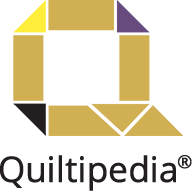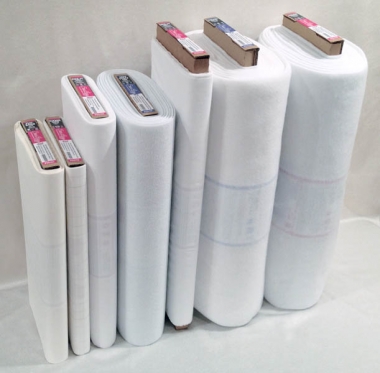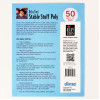Interfacing
Interfacing is a category of products used to stiffen, add body or reinforce fabric. Interfacing can also be used to keep a fabric from stretching. There are many types of interfacing designed to meet specific needs; woven, non-woven or knit, ultra light to heavy weight and in widths from 12" to 60". Interfacing can also be fusible or non-fusible. Sewing or quilting projects will specify what type of interfacing to use. Interfacing is sold packaged or by the yard in fabric shops. Information about the type and weight and how to use the product is listed on the packaging.
Benefits of Interfacing
- Interfacing can stabilize hand or machine embroidery and keep it from puckering.
- Interfacing can keep t-shirt blocks from stretching when making a t-shirt quilt.
- Interfacing can add body to light fabrics like silk, making them more manageable.
- Interfacing can be used to prevent dark fabrics from shadowing through lighter fabrics when used for applique.
Tools and Supplies to use Interfacing
- Scissors will more than like be needed to cut out your Interfacing
- Iron and Pressing cloth or teflon sheet if the interfacing is fusible (you don't want this to stick to the iron or ironing surface)
What I Wish I Knew When I Started using Interfacing
INTERFACING can be intimidating but is an important part of a successful project, so it should not be avoided. Separate iron...get yourself a dedicated to iron if your're going to use an "ironable" or fusible interfacing! A teflon sheet or pressing cloth should also be used to protect the iron and ironing surface.












